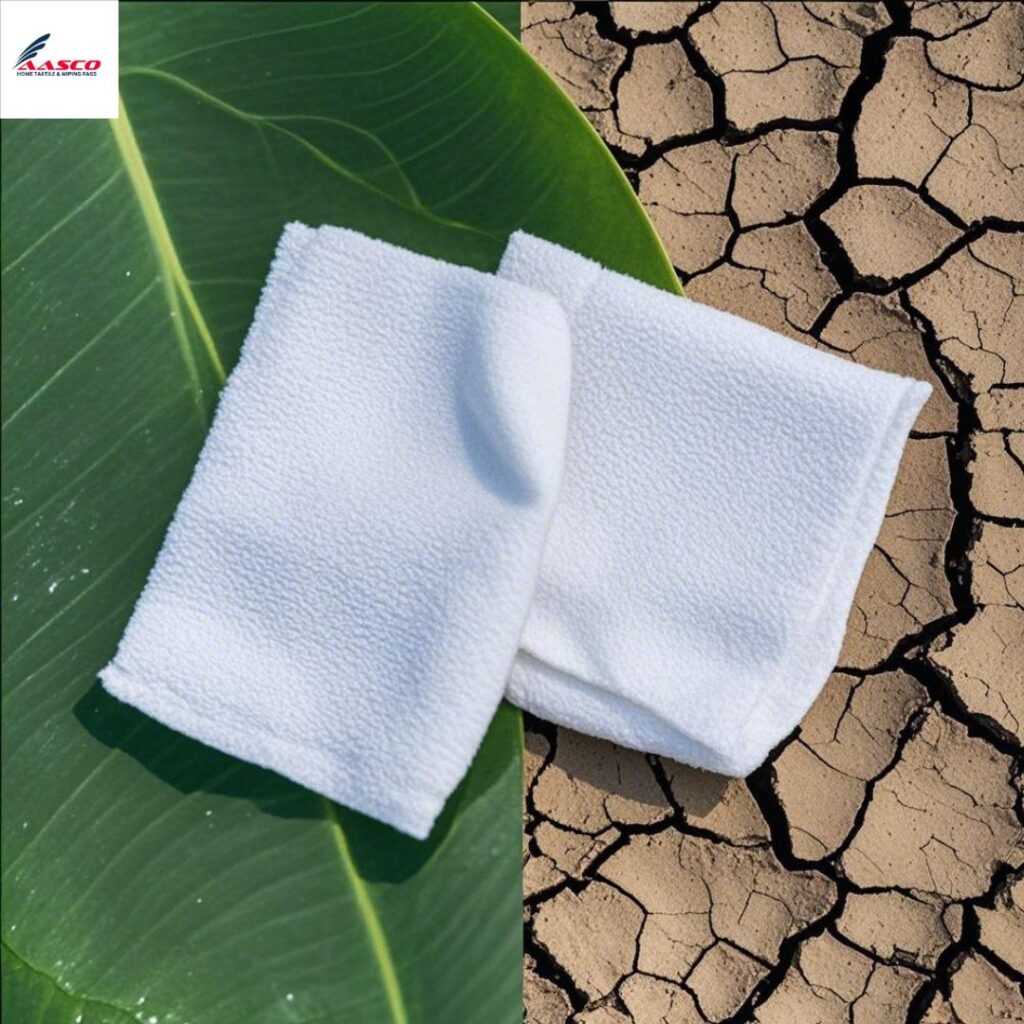Meta Description:
Discover how cotton rags outperform synthetic ones in biodegradability, energy efficiency, and eco safety. Learn why cotton is the smarter, greener cleaning solution.
Introduction:
A Clean Choice That Cleans the Planet Too
In today’s eco-conscious world, every small decision matters especially those related to sustainability. One often-overlooked choice is between using cotton rags or synthetic wipes for cleaning. Although both options may seem similar in function, their impact on the environment tells a different story. Therefore, this blog explores how cotton rags provide greater environmental benefits, making them a superior option for individuals and businesses striving to go green.

1. Materials Matter: Natural vs. Plastic Origins
Cotton Rags Grown, Not Manufactured
Cotton rags are generally made from natural fibers, either sourced from recycled garments or surplus textile waste. Because these rags originate from renewable plant sources, they biodegrade naturally and are safe for the environment.
Synthetic Rags A Petrochemical Product
In contrast, synthetic rags are made from polyester, acrylic, or nylon all petroleum-based plastics. These materials are not biodegradable and often release harmful chemicals during and after their production.
2. Waste and Decomposition: What Happens After Disposal
Cotton Disappears Naturally
When people throw away cotton rags, they break down quickly and safely, often within a few months. This process occurs without leaving behind toxins or microplastics.
Synthetic Rags Stay for Centuries
On the other hand, synthetic materials can persist in landfills for up to 500 years. During this long process, microplastics are shed, which pollute water, harm marine life, and eventually enter the human food chain.
3. Energy Use and Carbon Footprint
Cotton Is Easily Recycled
Cotton rags can be recycled from used fabrics with minimal processing, which reduces energy consumption and carbon emissions. As a result, many industries prefer cotton for its low environmental cost.
Synthetic Rags Require Energy-Intensive Production
Manufacturers produce synthetic fibers through high-energy chemical processes, which significantly contribute to greenhouse gas emissions and environmental degradation.
4. Microplastics: A Hidden Danger
Microplastics are microscopic particles that break off from synthetic fabrics during washing. Researchers have found these in oceans, soil, and even the bloodstream of humans.
Cotton, being a natural fiber, does not release microplastics, making it safer not just for the environment but also for human health.
5. Reusability and Performance
People widely praise cotton rags for their high absorbency, softness, and ability to withstand multiple washes. This extends their usable life and reduces waste.
Although synthetic rags are also reusable, their fibers degrade faster, which results in more frequent replacement and more waste in the long run.
Conclusion:
Cotton Rags Are the Sustainable Solution
To sum up, cotton rags clearly offer more environmental benefits than their synthetic counterparts. From their natural origin and biodegradability to their low energy usage and zero microplastic release, cotton rags align with the values of sustainability, safety, and smart business. For any organization committed to eco-friendly practices, making the switch to cotton is not just a responsible choice it’s the right one.
